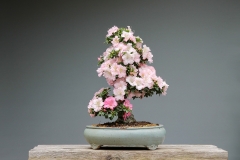5 Flower Traditions You Don’t Know, From Around The World
If you were born and raised in the UK, you’ll associate different occasions and events with one or even several specific flowers. Walking into a flower shop in February and you’ll be unsurprised to find roses presented in bright shades of red and pink. At a funeral, lilies and white carnations are more likely to feature as part of the decor.
However, this isn’t universal throughout the world, and many regions have very different cultural norms that may surprise you. Here are several examples:
Cultural Crockery & Carnations - Greece
Plates being smashed on the floor amongst energetic dancing to live music only reminds us of only one nation on earth, Greece. What you may not have noticed is that whilst the plates are breaking on the floor, carnations are being thrown to the singers as part of the tradition. The cleanup operation is by no means an enviable tasks, but the dancefloor at the end of the party tells you a lot about the fun and enjoyment that was experienced just hours before.
No Pot? No Problem - Japan
Potted plants in the UK are often gifted when somebody moves into a new home or indeed in many other scenarios and it’s very difficult here to cause offence with a plant in a pot. But further from home in Japan, the same isn’t true. The reason comes from a similarity between two words in the Japanese language, but giving a potted plant to somebody who is ill can be perceived as a gesture of telling them to stay in bed, i.e. not recovering from their illness.
Have a Pot? No Problem - Brazil
If you jump on the plane from Tokyo to Sao Paulo, the rules change again. Turning up at a dinner party with a potted plant is a well-accepted idea and a preferred alternative to flowers. In short, it means the host doesn’t have to quickly find a vase in which to display your flowers. Let’s hope there aren’t any Japanese people feeling a little under the weather at your dinner party.
It’s ‘Odd’ in Russia - Russia
Flowers are well-received in Russia. For a nation with a lot of history and a historically symbolic colour, you won’t typically offend anybody by getting it wrong, but it’s always good to know how your gift will be seen. In Russia, it’s customary to gift an odd number of flowers in a bouquet, unless you’re at a funeral. The rule only applies up to a dozen flowers but many people observe the rule above that. Before you begin your flower arithmetic, remember that Russian people love flowers. You can’t give too many.
Another fun Russia fact...if you’re bringing flowers to a date, the depth of colour in the flowers can signify the depth of the relationship. Best to start off with white roses at the beginning, perhaps.
Boardroom Bamboo - China
Often known as “Lucky Bamboo”, in China and other south-east Asian countries, many companies keep twisted bamboo plants in the office. The rationale is that the plant brings prosperity and success to the company. There’s also significance in the number of stalks present. Three stalks represent happiness and wealth whereas ten represents completion and perfection. Being part of the country’s history for thousands of years makes it unsurprising that it has fed into cultural beliefs.
Know your flower etiquette, wherever you travel
Next time you take your Russian date to a dinner party in a Chinese company’s boardroom having been invited by a Brazilian host whose friends are Greek and Japanese, you’ll know exactly which combination, colour and quantity of flower to bring along.
One thing that is common throughout the world is that flowers are often tied into the culture of a nation, and this is evident in the variation of customs that exist that have been around for a long time. Of course, the world is constantly changing and being more linked together than ever before, you would be surprised how much we have to be aware of the norms and traditions in cultures other than our own.
